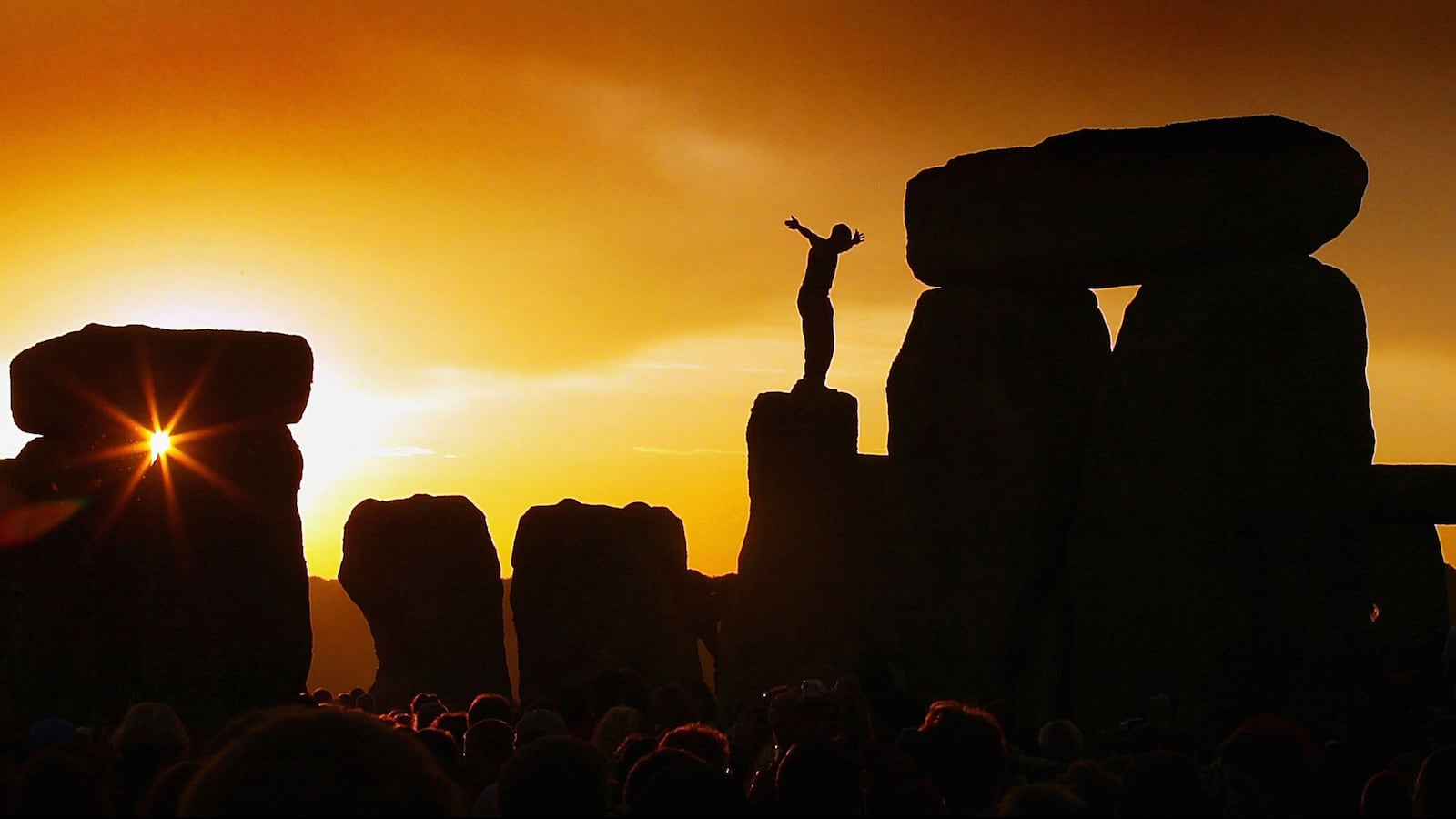ROME—Roll up your yoga mats, hide the virgins, grab your sleeping bags. It is the summer solstice and time to get in touch with your pagan soul.
June 21 is when the summer solstice is celebrated in the northern hemisphere, although it can occur a day before or after. It is the day when the sun reaches its highest point during the year, directly overhead at noon above the Tropic of Cancer, which runs through Mexico, North Africa, Arabia, India and Southern China. The further north you go, the earlier the sun goes up, and the later it goes down until, in the far north, it never sets at all.
Ancient cultures held this midsummer day of demarcation, when the awakening of spring draws to an end and the hot slow slide through summer into autumn begins, as a day to celebrate. As crops began to ripen, fertility and fecundity filled the spirit and gods and goddesses were to be thanked profusely, even ecstatically.
That last part of the tradition, the surrender to exaltation, has never really gone away.
In Paris, for instance, the “Fête de la Musique” fills the streets with the cacophony of bands and ensembles throughout the abbreviated hours of darkness.
For ultra-traditionalists, in Stonehenge in England revelers dressed in Druid gowns and floral crowns gather to catch the solstice sunrise as it aligns itself perfectly through the ruins of what were once circular stone walls. It is widely believed that Stonehenge was built to track the sun’s movements throughout the year and to determine just when the solstice occurred. (This year, sadly, revelers will have to go through layers of security as the UK cracks down after a spate of terror attacks.)
In Iceland, the sun will set a couple of minutes after midnight, and rise again a few minutes before 3:00 a.m. In parts of Norway, north of the Arctic Circle, night never comes this time of year.
Bonfires, thought to represent the sun, are key to most solstice celebrations like those in Germany that honor the Sun Goddess Saule. But originally the fires were more likely used for human sacrifice. Julius Caesar, especially, liked to burn men in large wooden human-shaped frames on the shortest night of the year. (No, this was not part of the play in Central Park this year.)
In Rome, revelers will gather inside the ancient Pantheon to witness the only day of the year when the sun casts a perfectly complete spotlight on the ancient marble floor around 1pm (thank you daylight savings time for moving the spectacle an hour ahead of what it should be).
It was Emperor Hadrian’s idea that he should always be cast in the sun’s spotlight when he entered the temple, which he did at varying times of the day throughout the year as the sun shifted and cast a light on the doorway at different times. On the solstice, those in the know now take selfies from inside the perfectly sunlit circle.
Romans also still celebrate the Vestalia, an ancient rite honoring the Goddess Vesta in the two weeks leading up to the solstice night when the Vestal Virgins or priestess keepers of the flame dedicated to fertility were allowed into Vesta’s temple. For the last several days, young girls in white gowns could be seen enacting the virgins’ dances.
In Russia and some Slavic countries, people will gather St. John’s Wort fronds at midnight to ward off evil tempers. In Sweden women wear compulsory floral garlands, and in Spain they meet to dance on rose petals.
In Australia, which is celebrating the winter solstice—the longest night of the year— in the southern hemisphere, many revelers traditionally celebrate with midnight yoga sessions. Yoga is also popular in New York, where an annual “Mind over Madness” yoga fest is held in Times Square.
All of this sounds like great fun, and is. But take note: some church leaders frown on the spiritual aspect of yoga. Pope Francis himself has warned that “a million courses in yoga, Zen and all these things … will never be able to give you freedom." And some Anglican Church parishes in Australia have gone still further, denouncing the practice of yoga as linked with Satanic worship and “confusion” about which God is being prayed to.
Someone always wants to spoil the party. But on a midsummer night? Dream on.
—with additional reporting by Christopher Dickey in Paris





